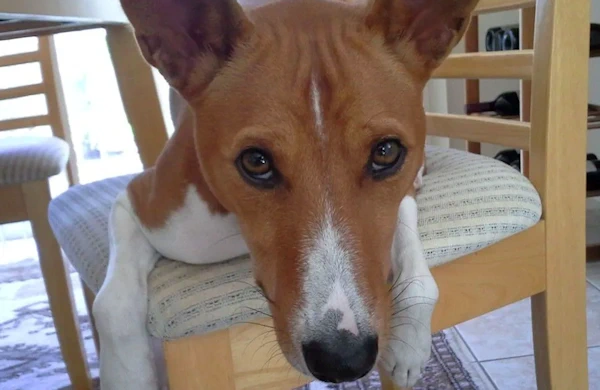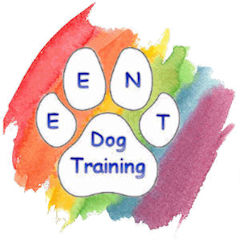
About Me
I would much rather fill this page with stories about the dogs I’ve spent time with – my own dogs, those belonging to friends, my clients, my students, and the ones who live or lived in the shelter where I volunteered. But this is where I’m supposed to talk about me. I did a lot of that when I was working full-time for the Federal government and was happy to give up the interviews and resume updating when I retired. But it turns out that the kind of work I did as a management analyst and project manager is very similar to what I do now as a dog trainer:
In my 21 years as a federal government employee, my favorite projects were those that involved looking at a process that employees complained about or refused to use, and asking important questions to resolve the problems:
- How is this process supposed to work?
- Why isn’t it working as designed?
- What is it specifically that is difficult for you or that you don’t like about it?
- What can we do to fix it?
- Fixing the process – or replacing it with something better – and stress testing it to make sure it works.
- Showing employees that the process is functional again.
With some changes in terminology, this is similar to how we address problematic behaviors that our dogs engage in.
I spent 13 years living and working in foreign countries – Germany, Japan, and Saudi Arabia – where the people speak different languages, have different cultures, and follow different rules and laws than the ones I was familiar with, which is what our dogs experience in our human-centered world.
I discovered a love for teaching while working on a long-term software implementation project. This experience is invaluable in developing dog training lesson plans and being comfortable with public speaking.
My fascination with dogs – what they do, why they do it, how they communicate, how to help them when they’re having a hard time – deepened when I started working with troubled and unattached dogs.
My Dog Training Journey
After living with and training a series of “easy” dogs, the kind that seem to learn quickly and never get into trouble, Lewis, the 8-week-old Basenji puppy I brought home in February 2014 was a challenge from the very beginning. Two Puppy Kindergarten classes followed by a formal Basic Obedience class got us started down the right path, but neither of us had much fun. Lewis was showing me what was wrong, but I didn’t understand what he was “telling” me. It wasn’t until we started agility training when he was 18 months old, then nose work classes a year later, that we both felt that spark that ignites when you find a kindred spirit.
Many of my students – especially in my group classes – are embarrassed by the behavior of their dogs in class. I empathize with you, because my dog Lewis was THAT dog in every class we did, except he was crowing like a rooster or yowling like a cat instead of barking! I’ve worked hard to help him to control his impulses and learn better ways to deal with his emotions, but like me, he is a work in progress. Lewis still shrieks whenever he sees wild animals through the car windows, but at least I know why he does it, and that he’ll settle down when the animals are out of sight.
My drive to help my own dog plus my love of teaching… Could I do both? With lots of encouragement from friends and family members who offered me the use of their dogs as students, I enrolled in the CATCH Canine Trainers Academy to become a professional dog trainer. I moved from Florida to Texas in 2017 and started my business in Kerrville, TX, in 2018.
The shelter externship I did as part of my CATCH training program resulted in my volunteering for 5-1/2 years at a local animal shelter, helping the dogs who lived there become more adoptable. Volunteering at the shelter – working with 399 dogs of all ages, sizes, and temperaments – gave me a much broader education and very different experiences than I would have had by only working with my own, clients’, or students’ dogs. Every dog has a story, but the story you get about a shelter dog is often short or nonexistent. However, if you spend time with these dogs – brushing fur, walking off-site, playing in a run or play yard, reading a book out loud or listening to music while you pet them – and take the time to “listen,” they will “tell” you their story. And then you do whatever you can to help them move forward.
My Approach to Dog Training
EENT… In all the classes, activities, and just life in general with my dog Lewis, I have learned to look at him – REALLY LOOK – at his eyes, ears, nose, and tail – EENT – to see what’s going on with him at any given moment, and to assess how receptive he is – and how successful I will be – in making our time together fun, productive, and something we both enjoy and look forward to. I learn something important from every dog I work with, something I put in my “toolbox” that might help the next dog. I am dedicated to helping others see dogs not just as animals to fulfill our human wants, but as thinking, feeling beings with their own “doggy” needs and desires. Whether you do it through private training sessions or group classes, the bond you develop with your dog through mutual understanding and respect and fun, shared activities is worth every minute.
Private Training
If your dog’s only outings are walks in the neighborhood and trips to the veterinarian or groomer, he – and you – may feel less stress by doing Private Training Classes in the comfort of your home. Whether it’s learning foundation skills like SIT, COME, DOWN, and STAY; or “unlearning” bad habits like standing at the window and barking at everything he sees, or jumping up on people and furniture; it will be easier for your dog to learn better behaviors in an environment where he feels less inhibited and where the behaviors most frequently happen. Using science-based / reward-based training methods, I can design a training program that addresses everyone’s capabilities and unique challenges to achieve your goals.
Group Training Classes
If you plan to take your dog out in public, where he’ll be around other people and dogs in a confined space, Group Training Classes are a good place to start. A structured classroom setting without a lot of environmental stimuli makes it easier for your dog to focus on you. As your dog learns from you what he should pay attention to – and what he should ignore – when you take him to different places, the more comfortable and confident he will become as you continue training in more challenging settings or conditions.
Reach Out to a Trusted Professional Dog Trainer Today
If you are wondering where to begin with your new puppy, want to fine-tune your dog’s foundation skills, teach an older dog some new tricks, or need help transitioning a recently-adopted dog to his or her new home, Contact Me and let’s get started.

